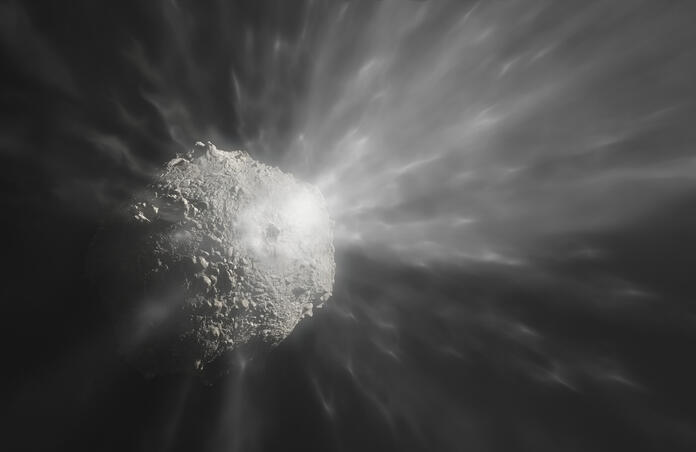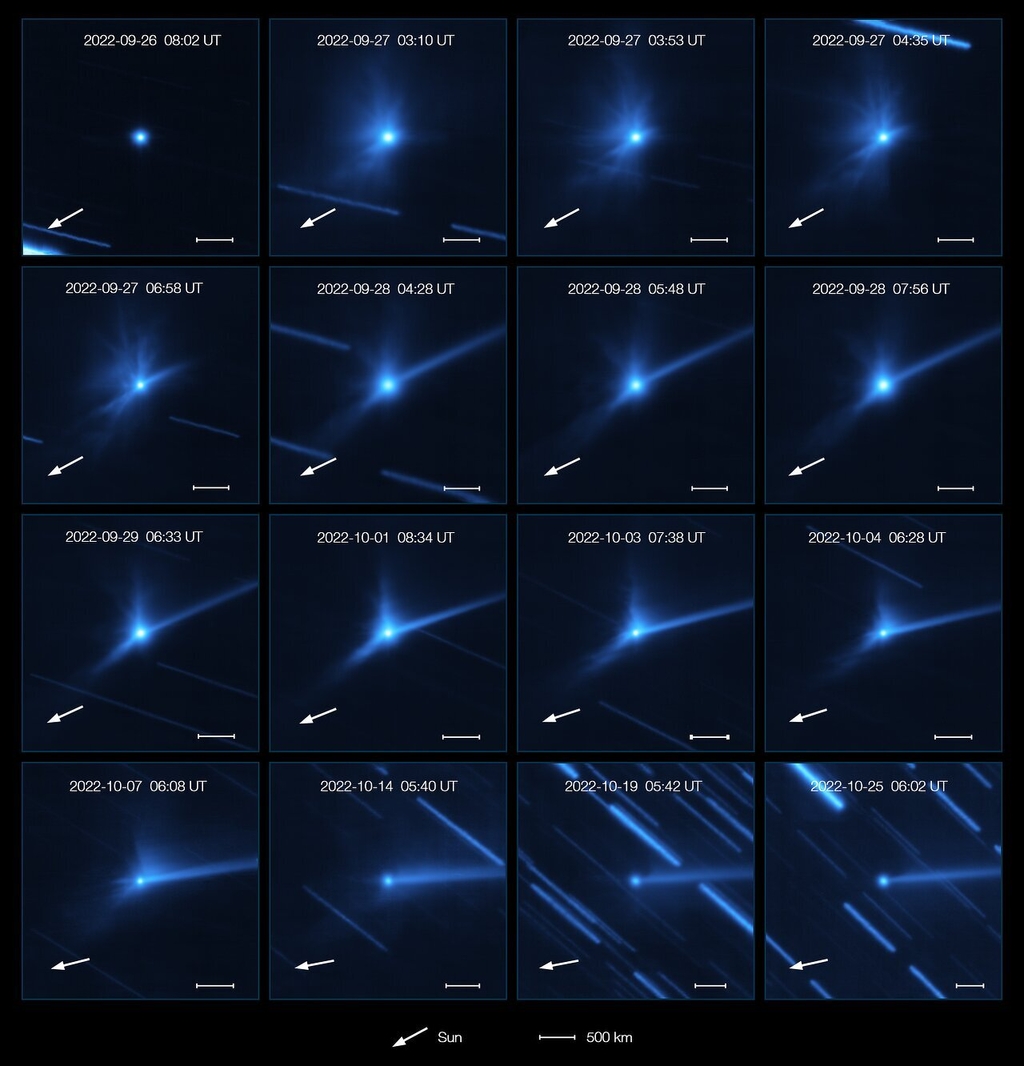First analysis of aftermath from NASA’s DART mission show no traces of water ice

Two groups of astronomers have investigated the results of the collision involving the double asteroid system of dimorphous and didymos, which were the targets of NASA’s Double Asteroid Redirection Test (DART). The groups both used instruments at ESO’s Very Large Telescope (VLT), uncovering information about the nature of the ejecta, as well as any chemical signatures on the asteroids surface.
Last September, NASA fired a spacecraft at the asteroid dimorphous in an attempt to test planetary defense should an asteroid ever be headed on course for Earth. the impact occurred 11 million km away, a short enough distance to observe in detail using a number of telescopes. This event gave astronomers the rare opportunity to follow such an event and learn more about the composition of the asteroid from its ejecta.

The aftermath of the collision was observed using ESO’s VLT, situated in Chile. This system comprises four 8.2m telescopes, all of which were used to make observations. Brian Murphy, a PhD student at the University of Edinburgh along with colleagues followed the evolution of the debris clouds for a month after impact using the Multi Unit Spectroscopic Explorer (MUSE) instrument at the VLT. Asteroids are some of the most basic relics of what all the planets and moons in our solar system were created from," says Brian Murphy, a Ph.D. student at the University of Edinburgh in the UK and co-author of one of the studies. "Studying the cloud of material ejected after DART's impact can therefore tell us about how our solar system formed." The team uncovered that the ejected cloud was bluer than the asteroid was before the collision, therefore suggesting that the cloud consists of very fine particles. Additionally, several structures of the cloud were seen to develop in the following days, such as clumps, spirals and a long tail which was pushed away by solar radiation. These features were redder than the initial debris, indicating that they are composed of larger particles.
The spectra of light emitted from the ejecta cloud was also analysed to look for chemical fingerprints of water and oxygen, however, nothing was found. Although asteroids are rocky bodies held together by gravity, the existence of water ice on some of these objects remains an ongoing field of study. Water ice was previously discovered in 2009 on the surface of asteroid 24 Themis using NASA’s Infrared Telescope Facility, however the question of how this ice came to be remains unsolved. "Asteroids are not expected to contain significant amounts of ice, so detecting any trace of water would have been a real surprise," explains Cyrielle Opitom, astronomer at University of Edinburgh and the lead author of one paper. The team also looked for signs of propellant from the DART spacecraft, but again there was no trace seen. However, given the small amounts, this isn’t surprising.
A different team, led by Stefano Bagnulo, astronomer at the Armagh observatory and planetarium in the UK investigated how dimorphous’ surface changed from the collision. The team followed the change in the polarisation of light with the asteroids orientation relative to earth, therefore uncovering the structure and composition of the surface. Using the Focal Reducer/low dispersion Spectrograph 2 (FORS2) instrument at the VLT, it was found that the level of polarisation had a sudden drop after impact, whilst simultaneously, the overall brightness of the system increased. This suggests that the impact could have exposed more pristine material from the asteroids’ interior.
"Maybe the material excavated by the impact was intrinsically brighter and less polarizing than the material on the surface, because it was never exposed to solar wind and solar radiation," says Bagnulo. Another potential explanation for such findings could be that the collision destroyed particles on the surface, causing much smaller ones to be ejected into the debris cloud. "We know that under certain circumstances, smaller fragments are more efficient at reflecting light and less efficient at polarizing it," explains Zuri Gray, a Ph.D. student at the Armagh Observatory and Planetarium.
Along with this analysis, the VLT has observed the aftermath using two other instruments. Analysis of this data is still ongoing, and will hopefully be released in the near future.
--
Cover image: ESO / M. Kornmesser.
Journal source/s:
C. Opitom et al, Morphology and spectral properties of the DART impact ejecta with VLT/MUSE, Astronomy & Astrophysics (2023). DOI: 10.1051/0004-6361/202345960
Optical spectropolarimetry of binary asteroid Didymos-Dimorphos before and after the DART impact, Astrophysical Journal Letters (2023). DOI: 0.3847/2041-8213/acb261. iopscience.iop.org/article/10. … 847/2041-8213/acb261
